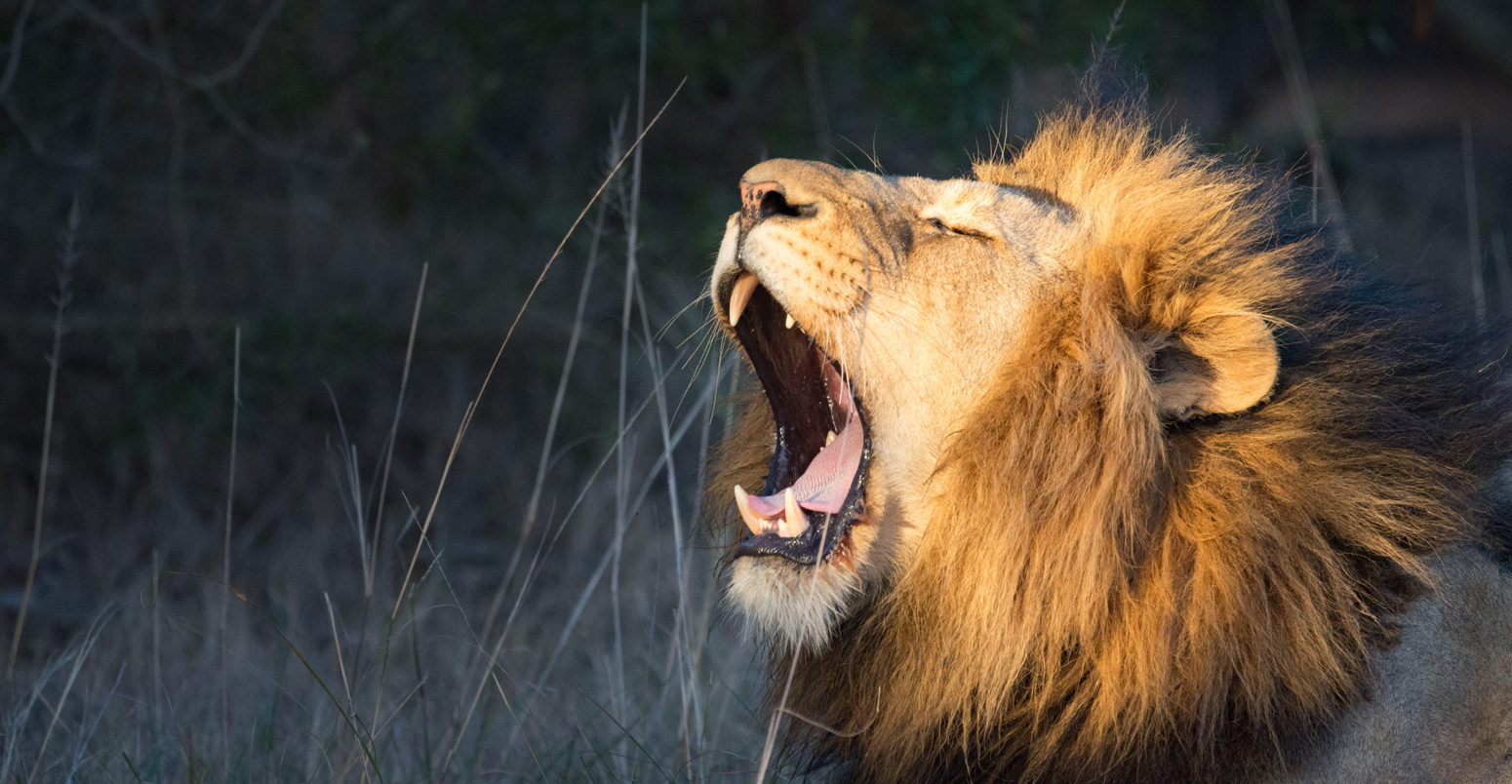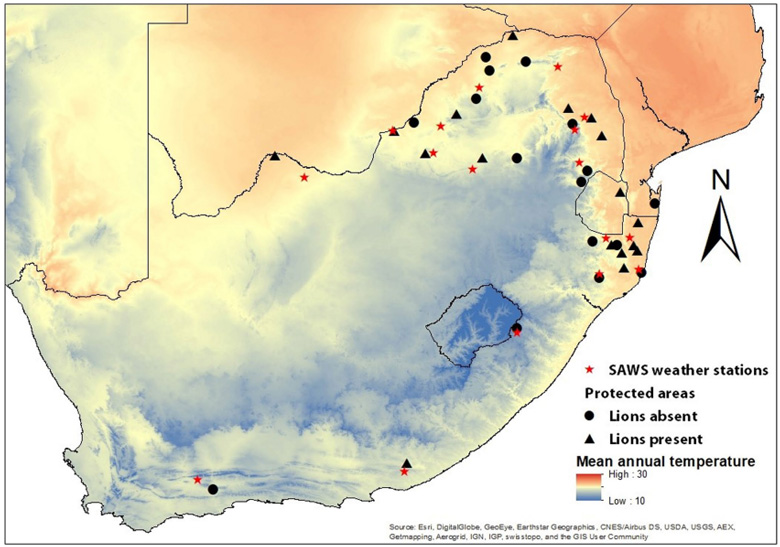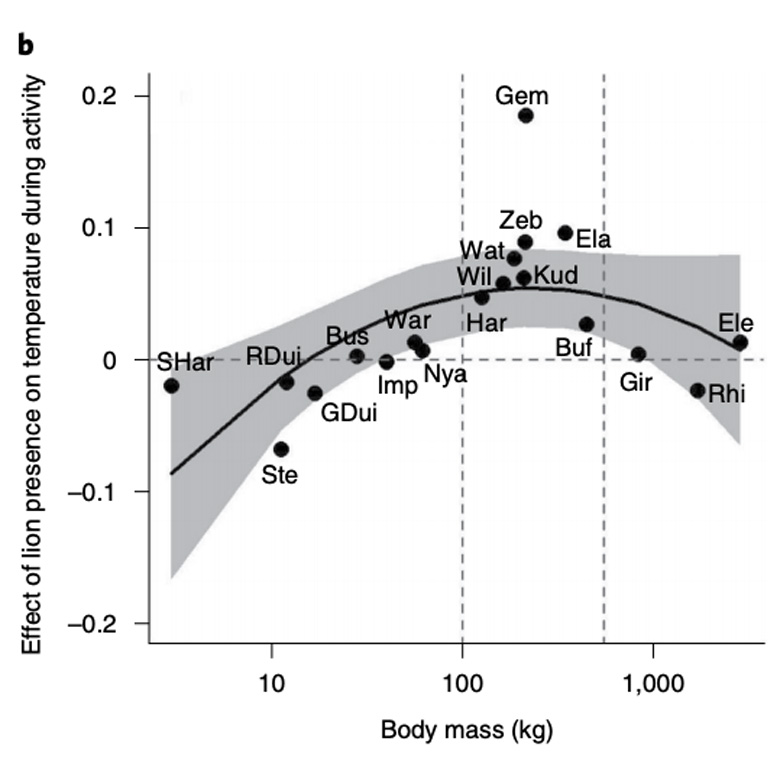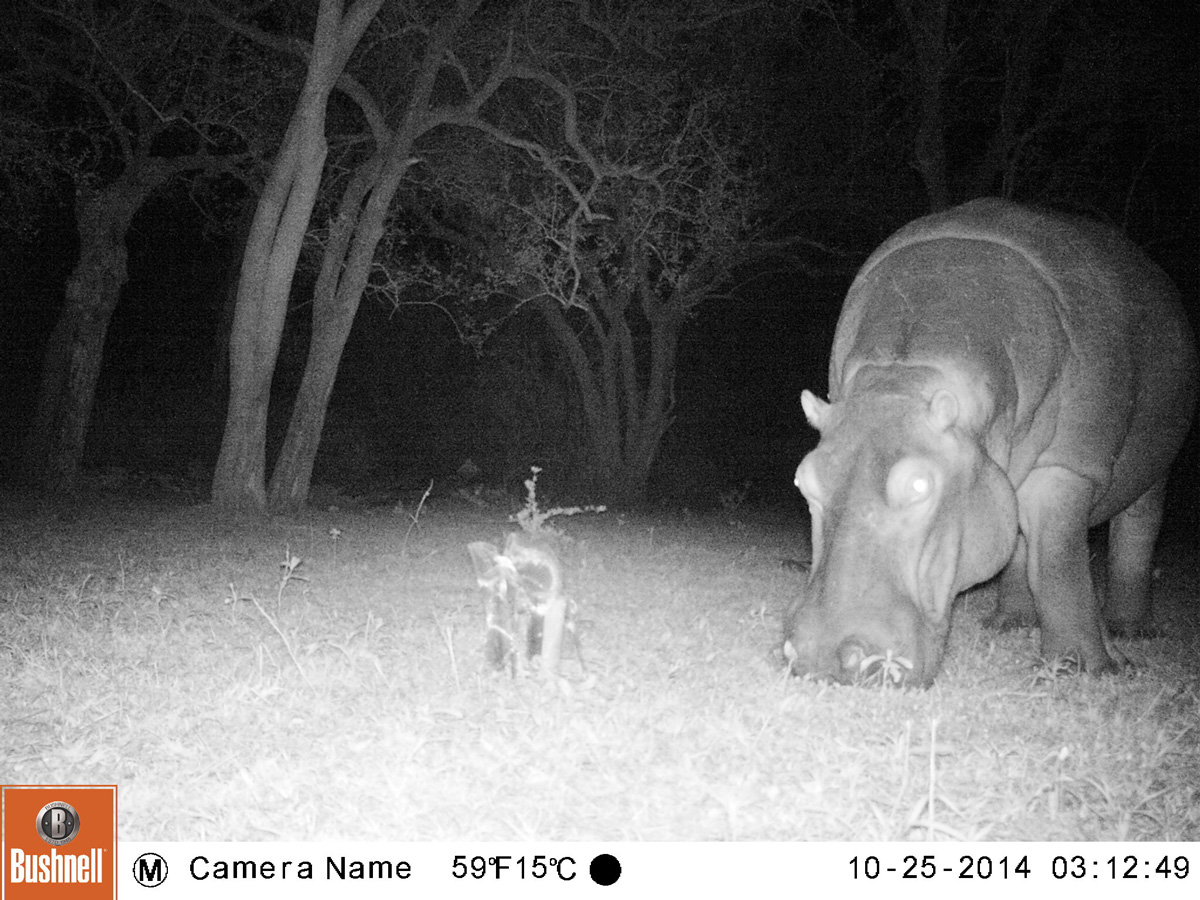
Lions could prevent their prey from adapting to increasing heat, study says
Daisy Dunne
06.01.20Daisy Dunne
01.06.2020 | 4:00pmLions could limit their prey’s ability to adjust to warming temperatures, according to a new study making use of camera traps across southern Africa.
The research finds that prey species, such as gemsbok, zebra and waterbuck, switch to feeding at hotter times of the day when they are in the presence of lions. They do this because lions prefer to hunt in cooler times of the day.
The switch leaves these large herbivores more vulnerable to heat stress – and less able to adapt to rising temperatures, the lead author tells Carbon Brief.
Understanding how some animals could affect the adaptability of others “is an important step forward for projecting climate change risk to biodiversity”, another scientist tells Carbon Brief.
Balancing act
For mammals living in the African savannah, every day is a calculated balancing act between finding enough food and water and avoiding dangers, such as predators and heat stress.
Climate change could make this tightrope walk even narrower. Scientists expect that temperatures over the continent of Africa will rise at a faster rate than the global average.
To adapt to the increases in heat, many African mammals may need to try to change their behaviour or move into new areas. The new study, published in Nature Ecology and Evolution, explores why adapting to rising heat might not be straightforward for some species.
It finds that lions could limit the ability of their prey – medium-sized herbivores – to adapt to increasing heat, says study lead author Prof Michiel Veldhuis, an ecologist at Leiden University in the Netherlands. He tells Carbon Brief:
“Now the world is warming up, these herbivores face a tightening window and will probably, depending on their traits, respond in different ways.”
Caught on camera
For the research, the scientists used 32 camera traps spread across wildlife-protected areas in southern Africa, including South Africa and Eswatini. Veldhuis explains:
“Cameras take a picture when something moves in front of the camera and record the time. This makes it possible to investigate when animals are active and calculate overlap in activity between predators and prey.”
Lions had been hunted to extinction in all of the 32 sites around the 1950s. However, they were later reintroduced to around half of the sites. This provided the scientists with a “natural experiment” – allowing them to study how the presence or absence of lions could affect the activity of herbivores.
The researchers tracked the movements of 29 different herbivores in the African savannah, ranging in size from the “3kg scrub hare to the 4,000kg elephant”.
The map below shows the distribution of camera traps where lions were present (triangles) and (absent). The mean annual temperature is also shown, with red indicating relatively high temperatures of 30C and blue indicating relatively low temperatures of 10C.

The research finds that the presence of lions had the largest effect on the activity of medium-sized herbivores such as gemsbok, zebra and waterbuck. (Animals of this size are the preferred prey of lions, the authors say.)
In sites without lions, these herbivores spent most of their time feeding in cooler hours of the day – around dawn or dusk, the study finds. However, in sites where lions were present, the same species spent most of their time feeding in hotter temperatures around the midday sun.
It is likely that herbivores increased their exposure to hotter temperatures in order to avoid predation from lions, Veldhuis says:
“We find that lions almost always choose to hunt during the coldest moments of the day, which is at night, mostly in the early hours of the morning. As the largest carnivore out there they can choose the most optimal time to hunt.”
There is not yet evidence to suggest that lions are negatively affected by the herbivores’ change in behaviour, he adds.
The chart below shows how the presence of lions affected the average temperature during activity for different herbivore species, when compared to sites without lions. (For example, a y-axis value above zero indicates that the presence of lions increased the average temperature at which a herbivore is active.)
On the chart, the vertical dashed lines illustrate the preferred prey range of lions, which is 100-550kg.

The chart shows how lions had the largest impact on prey species that fall within their preferred size range, which include zebra, wildebeest and waterbuck. The species most affected by the presence of lions was gemsbok, a large antelope native to arid parts of southern Africa.

It is likely that elephants and rhinos did not significantly alter their activity in the presence of lions because “they are too large to be caught”, the authors say in their research paper.
On the other hand, small species such as hares and steenbok may not alter their behaviour because they are not the preferred prey of lions and are more often hunted by other carnivores such as hyenas, the authors say.
‘Serious constraint’
The findings suggest that medium-sized herbivores might be prevented from adapting their behaviour in the response to future warming, the authors say in their research paper:
“These results suggest that high ambient temperatures are a serious constraint for herbivores, particularly intermediate-sized herbivores, and thus predation risk limits the behavioural capacity of herbivores to deal with high temperatures.”
Previous research has shown that medium-sized herbivores can suffer from hyperthermia (overheating) if active during the warmest hours of the day.
The research “highlights how important interactions between species are for understanding how they might respond to global warming”, says Peter Soroye, a PhD candidate in biology from the University of Ottawa, Canada, who recently published a study on projected bumblebee declines worldwide. He tells Carbon Brief:
“[The findings] show that interactions between species, in this case predation, can ‘force the hand’ of species when it comes to strategies for coping with temperatures. When it comes to projecting the effects of climate change on wildlife, we often don’t stop to consider how species’ strategies and ability to cope with temperature might be influenced by interactions with other species.”
Accounting for how some species can affect others’ ability to adapt to warming in projections for future biodiversity could reveal larger losses, says Dr Chirstopher Trisos, a senior researcher at the African Climate and Development Initiative at the University of Cape Town, who was not involved in the study. He tells Carbon Brief:
“Considering how species’ capacity to adapt to climate change can be enabled or constrained by interactions with other species is an important step forward for projecting climate change risk to biodiversity. When ecological forecasts include species interactions, the risks of species loss from climate change can often turn out bigger than expected.”
The findings add to the “key issue” of understanding how climate change will alter interactions between species, adds Prof Jon Bridle, an evolutionary biologist from the Centre for Biodiversity and Environment Research at University College London. He tells Carbon Brief:
“Although this study focuses on predation, climate change will also change the behaviours that organisms can use to mediate other negative interactions, such as competition, parasitism or infection – as well as beneficial interactions such as with pollinators…The way that climate affects species interactions will have effects on ecosystem outputs in coming decades that we are yet to predict – and this remains an urgent research priority.”
Veldhuis, M. P. et al. (2020) Predation risk constrains herbivores’ adaptive capacity to warming, Nature Ecology & Evolution, https://www.nature.com/articles/s41559-020-1218-2
-
Lions could prevent their prey from adapting to increasing heat, study says
-
Lions could limit prey’s ability to adjust to increasing heat, study finds


